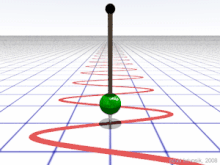Frequency

Frequency refers to the number of occurrences of a repeating event within a specific time period. In various contexts, frequency can represent different types of repeating events, such as oscillations, vibrations, cycles, or occurrences of a phenomenon.
-
Physical Phenomena:
- In physics, frequency often refers to the rate at which a wave oscillates or vibrates. For example, in the context of sound waves, frequency determines the pitch of the sound. In electromagnetic waves, frequency corresponds to the rate of oscillation of the electromagnetic field and is related to the color of light.
- Frequency is typically measured in hertz (Hz), where one hertz represents one cycle per second. For example, a frequency of 100 Hz means that the event repeats 100 times per second.
-
Electrical Signals:
- In electrical engineering, frequency refers to the rate at which an alternating current (AC) or alternating voltage changes direction within a circuit. This is commonly encountered in the context of alternating current power systems or electronic devices.
- Frequency is also measured in hertz (Hz) for electrical signals, representing the number of cycles per second. For example, the frequency of standard alternating current in many regions is 50 or 60 Hz.
-
Data Transmission:
- In telecommunications and data communication, frequency can refer to the rate at which data is transmitted over a communication channel. This is often expressed in bits per second (bps), kilobits per second (kbps), or megabits per second (Mbps).
- In wireless communication, frequency also plays a crucial role in determining the range, bandwidth, and efficiency of data transmission. Different frequency bands are allocated for various wireless communication standards, such as Wi-Fi, Bluetooth, and cellular networks.
-
Statistical Analysis:
- In statistics, frequency refers to the number of times a particular value or category occurs within a dataset. It is often represented as a frequency distribution, histogram, or frequency table, providing insights into the distribution and patterns of data.
Frequency is a fundamental concept in various scientific, engineering, and mathematical disciplines, playing a crucial role in describing and analyzing repeating patterns, signals, and phenomena. It is essential for understanding the behavior of waves, electrical circuits, communication systems, and statistical distributions.
Thank you,
